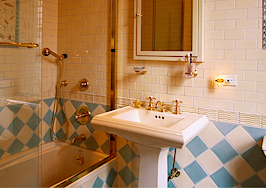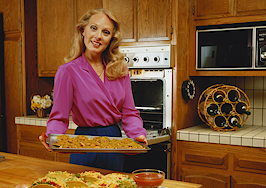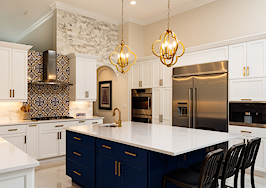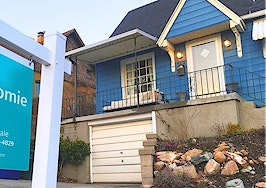To conclude this series, it’s best to look at the most recent developments in home design and what is in store for the future.
Technology is omnipresent in many areas of our lives but will become even more prevalent in our homes moving ahead. While the essential components of bathrooms of the 2020s (tubs and toilets) and contemporary kitchens (stoves, fridges) are the same, the designs and functions of each element will be more comprehensive and more sophisticated.
Homes are becoming more intelligent. Your fridge can order groceries for you. Your vacuum cleans the floors while you relax on the couch (or do anything else). The term “smart home” applies to features controlled remotely via smartphone apps. These applications benefit homeowners as they are convenient, energy-saving and offer increased security to the home.
Sophisticated smart home devices communicate with each other so that you can play music in different rooms of your house, for example. Voice-activated applications like Alexa and Siri are at your command when the speakers are switched on. A word to the wise: Alexa and Siri listen to and record your conversations if you do not turn your speakers off.
If you are contemplating buying a new washing machine, when you open Google or Facebook you will be assaulted with ads for washing machines. Remember, artificial intelligence connects to websites that rely on sales to stay in existence. AI will use the homeowner’s information to attempt to sell them more products based on conversations and prior purchases.
The smart home kitchen of 2020, of course, requires high-speed internet connections. A home in a remote area, far from an internet source or tower, will be unable to connect to the internet and access any applications. The real estate mantra “location, location, location” has never been more valuable and applicable. App-based technology is relatively easy to set up, but the homeowner may have to install many different apps for different products.
In the kitchen
The intelligent refrigerator does it all for you: If you leave the fridge door open, the app will tell you. The fridge also knows when your milk is about to expire or run out. Some refrigerators have television monitors on the exterior, allowing the home chef to research recipes while cooking.
Of course, the intelligent refrigerator will be streamlined and brushed stainless steel if new, or an upgraded retro model from another decade. When entering a futuristic smart kitchen of the 2020s, it will only be apparent if the appliances will respond to voice commands or be activated remotely once the homeowner tells you or demonstrates these options. The appliance salesperson of today must become a technology wizard or risk being a dinosaur.
Ovens are similarly intelligent these days. Home chefs can look up recipes, queue up timers for cooking different foods, control temperature, start cooking times and run diagnostics independently.
Just as one’s car can be evaluated for repairs and wear and tear at a dealership, programs for appliances will offer the same feedback. Sophisticated dishwashers monitor and start the wash cycle. And you can make your morning cup of joe before getting out of bed by telling your coffee pot to start brewing on your phone.
Kitchen design trends become secondary to the technology that smart home appliances offer. While a slick minimal or European vibe is commonplace with these cutting-edge applications, the most retro kitchen could be outfitted with smart appliances to move it into the future.
Window shades and blinds can be raised and lowered remotely or by a voice-activated command, and air conditioning and heating can be controlled remotely as well. Software also allows present temperatures to control window coverings.
A further development makes all window coverings outdated, as an application can turn transparent windows to opaque with a simple command. How long will it be before windows clean themselves, eliminating one of the homeowner’s most despised chores?
In the bathroom
The intelligent toilet features touchless flushing, an open-and-close lid sensor, and automatic bowl cleaning and deodorizing. No touching is required with remotely-controlled heated seats and built-in bidets. Plus, toilets can be programmed to analyze skin and waste to provide insight into the user’s health, all controlled remotely.
Toilets can be programmed to warm the seat, flush themselves and spray room deodorizer afterward. Self-cleaning toilets are also available, much to the relief of anyone who delays cleaning the toilet. As a result of health monitoring applications, toilets can analyze the quantity and contents of waste to report the user’s health conditions. This information is valuable to medical professionals and senior citizens.
Enhanced bathroom vanities let users brush their teeth while watching television. Mirrors can also be programmed to activate lighting and a defogging application. Showers can be turned on from anywhere at a predetermined temperature. No stepping into a cold shower that slowly warms up anymore. Some of these showers even have televisions.
All power to the home and the real estate agent
Power outages are the nemesis of the smart home. Without power and, hence, internet access, the smart home cannot operate. Backup batteries and generators will help alleviate your technology from shutting down.
Smart, forward-seeking real estate agents will have an advantage in selling homes. It is crucial to keep informed and updated on new advances in technology and home development.
Gerard Splendore is a licensed associate real estate broker with Warburg Realty in New York. Connect with him on LinkedIn.













